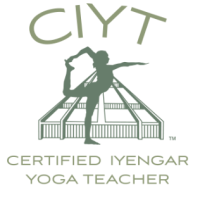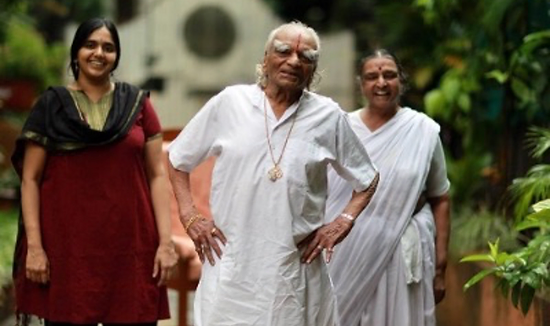ABOUT IYENGAR YOGA
Iyengar Yoga is based on the teachings of yoga master B.K.S. Iyengar (1918-2014) and rooted in the the 2,500 year old classical yoga tradition of the Yoga Sutra of Patanjali. As one of the most widely practiced forms of yoga, Iyengar Yoga has been described as “meditation in action.”
The many benefits of Iyengar Yoga include:
- Increased strength, flexibility and range of motion
- Improved balance and coordination
- Better posture and body awareness
- Stress reduction
- Increased focus and concentration
- Integration of body, breath, mind and spirit

Key features of Iyengar Yoga

Clear directions and demonstrations of the postures ensure a safe progression for students of different ages and fitness levels. Students get individual feedback to develop and deepen their practice and address health issues or injuries.

Crucial for creating stability and balance, proper alignment also becomes a tool to develop focus and self awareness so that the asanas are practiced as a “meditation in action”.

Iyengar emphasizes gradual and steady progress both within a given class and from class to class. With a deep understanding not only of how to prepare for more advanced postures but also of their beneficial effects, teachers structure their class to create a feeling of quietness and balance in the body and mind.

A wide selection of postures and pranayamas are taught at each level of study. Philosophical ideas and themes and creative use of props keep students engaged and challenged in their practice.

Much research is being done on the efficacy of Iyengar Yoga for treating many medical conditions and physical problems including Back Pain,Type 2 Diabetes, IBS, and Menopause.

In order to become an Iyengar teacher, candidates undergo years of extensive study in asana, pranayama, anatomy and philosophy, culminating with a rigorous national certification exam. They must study for a minimum of three years, complete a 500-hour training or equivalent program, complete an apprenticeship, and pass two levels of testing and evaluation. Their studies include anatomy, pranayama and yoga philosophy. They are trained at adapting postures to meet their student’s individual needs including common issues such as low back, neck and shoulder issues, headaches, anxiety, and depression. To maintain their certification, instructors need to continue their studies with Senior Iyengar Yoga teachers.

What is Iyengar Certified?
Unlike other forms of yoga practice, Iyengar Yoga has a standardized system of instruction and certification. All Certified Iyengar Yoga Teachers (CIYTs) pass a National Certification Exam and undergo a minimum of six years of training. CIYTs are required to take annual continuing education training and continued study with a senior teacher to maintain their
certification.
About B.K.S. Iyengar
Born December 14, 1918 in southern India, B.K.S. Iyengar studied and practiced yoga continuously for 80 years until his death in 2014 at the age of 96. He is largely credited for introducing and popularizing yoga in the West. His seminal 1966 book, Light on Yoga, has been the source for generations of yoga students. Mr. Iyengar revolutionized the practice in many ways. He opened up the study of yoga to women and started teaching groups of students rather than the traditional one-on-one method. He systematized 200 classical Hatha yoga asanas and 14 pranayamas ranging from simple to complex, in order to create a step-by-step manual for beginners to progress from the most basic postures to the most advanced.
He introduced the use of props or tools such as blocks, belts, blankets, and wall ropes to support and deepen the students’ experience in the postures or offer support in a pose that might not be possible for them to do otherwise. Along with the use of props, his pioneering teaching methods include precision in alignment, skillful sequencing, and the therapeutic application of yoga for ailments and chronic conditions. His legacy lives on through the teachings of his daughter Geeta, son Prashant, and granddaughter Abhijata.
Iyengar Yoga is firmly based in the traditional eight limbs of yoga codified 2500 years ago by the sage Patanjali in the Yoga Sutras. B.K.S. Iyengar’s approach is unique in that he infuses the eight limbs throughout the practice of the asanas and pranayama.
Mr. Iyengar transformed his ancestral village of Bellur with a visionary series of projects, including a hospital, a water treatment plant, schools, and a yoga hall for children. Prashant and Abhijata carry on his work in Bellur and his teachings at the Ramamani Iyengar Memorial Yoga Institute (RIMYI) in Pune, India.

